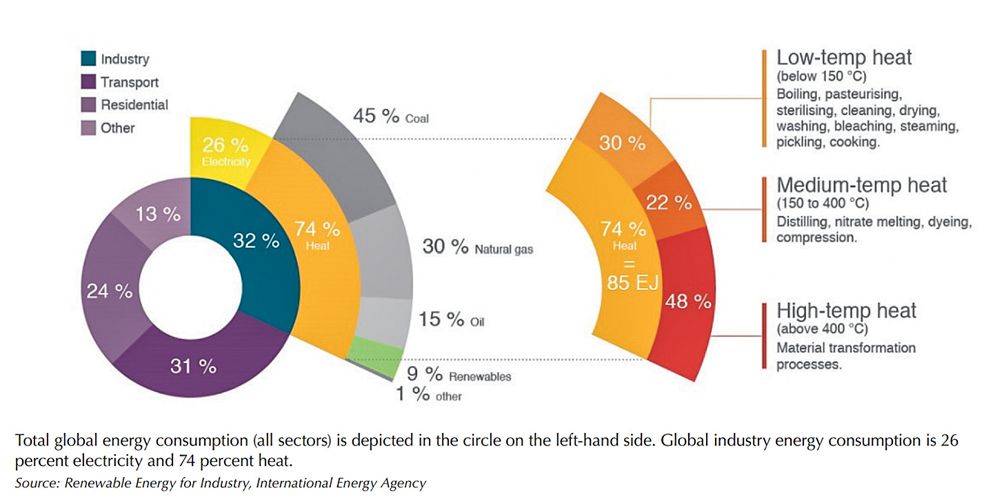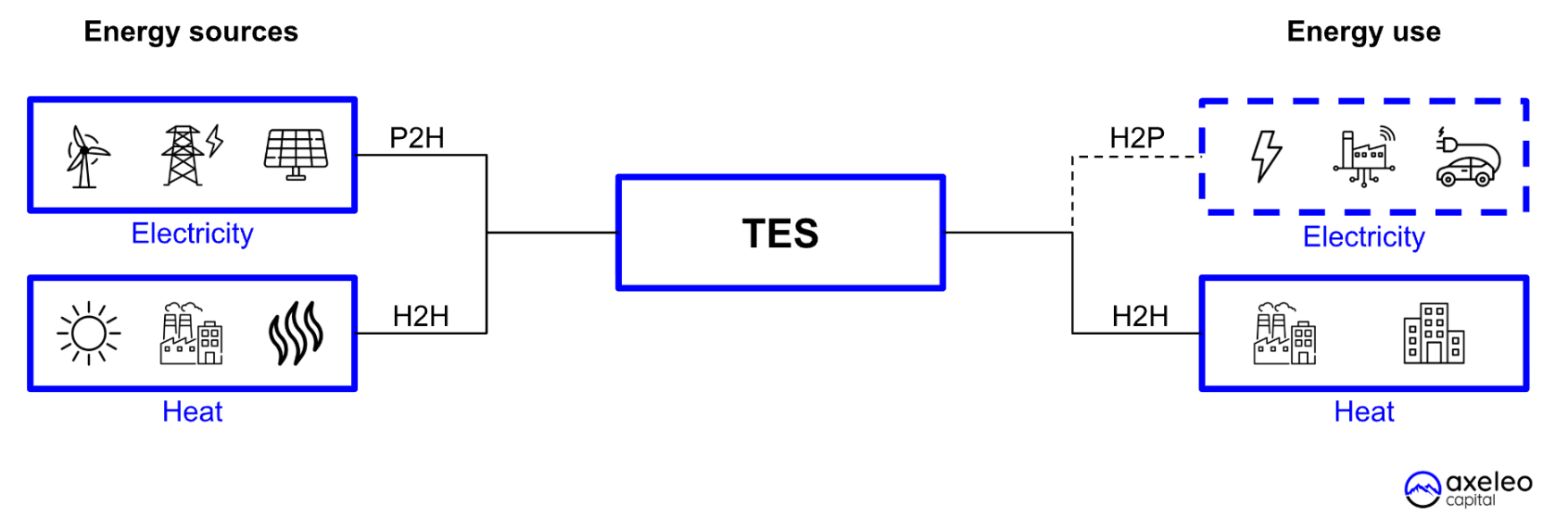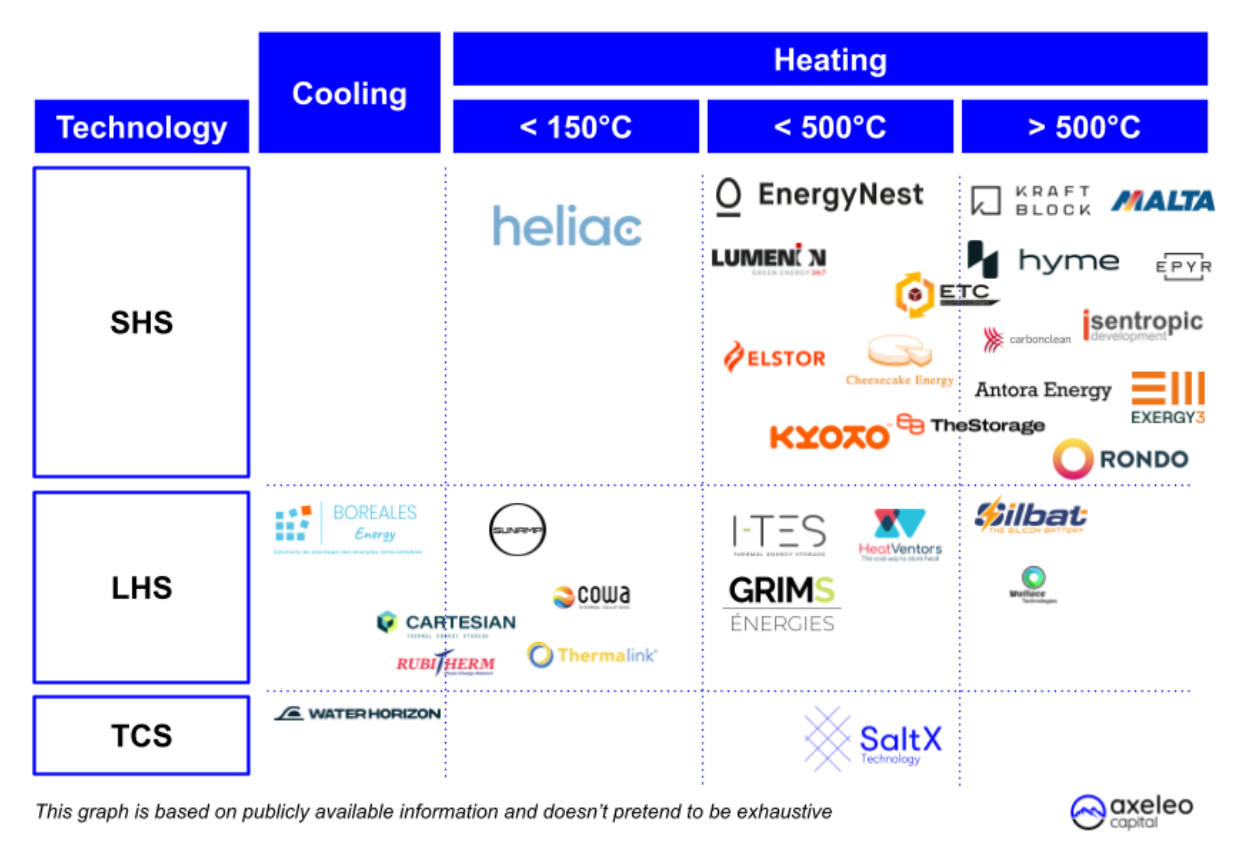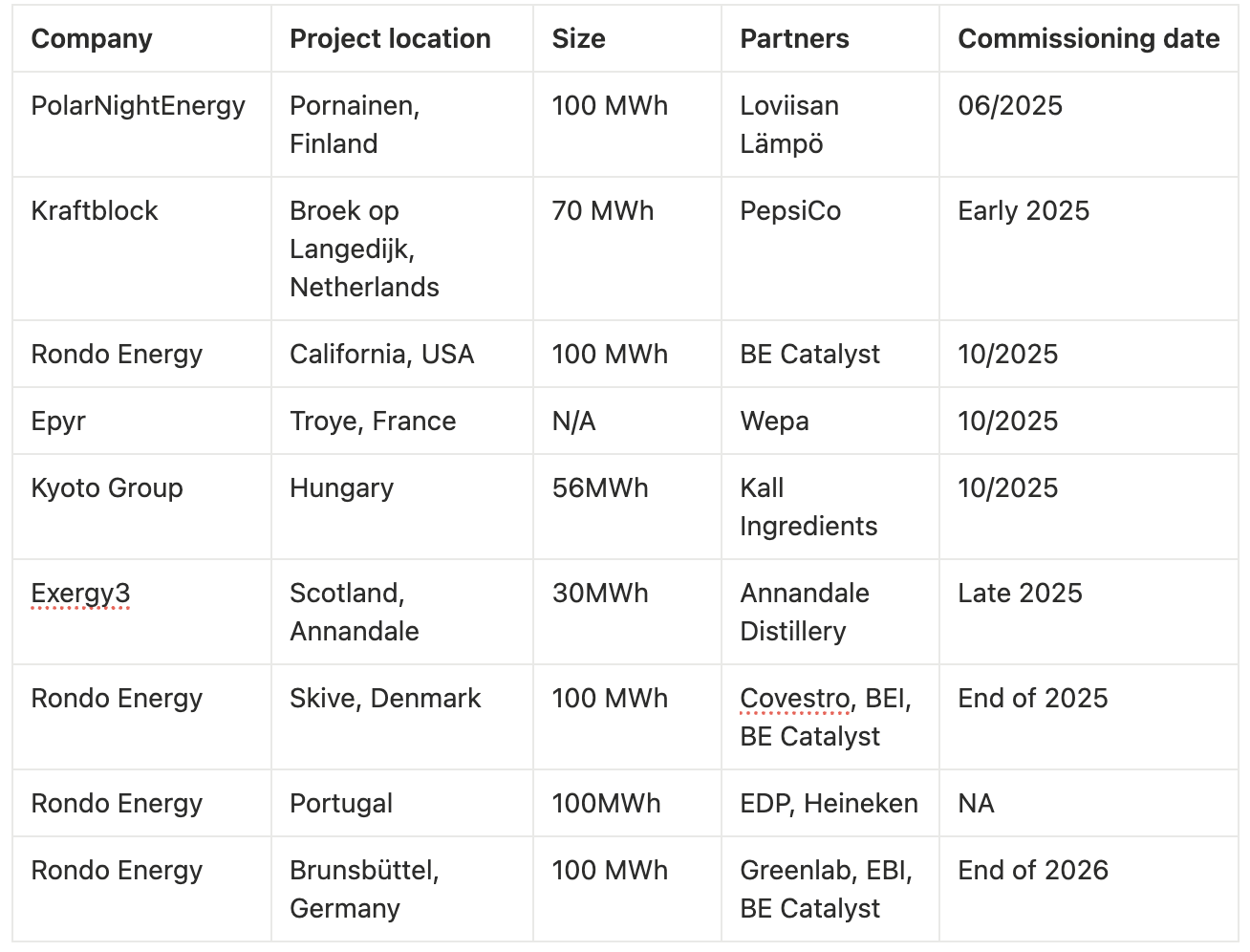Thermal Energy Storage - Deepdive
This article is the result of 12 months of industry discovery. It reflects on our vision of the Thermal Energy Storage industry and does not pretend to be exhaustive. We remain open to suggestions and are always interested in alternative perspectives on this evolving space. Feel free to reach out!
---
When we talk about the energy transition, we often focus on electric vehicles and renewable power grids. Yet, one of the largest pieces of the puzzle is frequently overlooked: heat. According to the IEA, heat accounts for almost half of the world's final energy consumption, dwarfing electricity (20%) and transportation (30%).
The problem? Only 10% of industrial heat comes from renewable sources. The industrial sector, in particular, is a colossal consumer, with 74% of its energy use dedicated to heat, not electricity. This reliance on fossil fuels makes decarbonizing industrial processes one of the most urgent and complex challenges we face in achieving carbon neutrality.

The scale of the challenge: Industry's addiction to heat
Industrial heat is the engine behind countless processes, from pasteurizing food and sterilizing medical equipment at low temperatures (below 150°C) to forging steel and manufacturing cement at very high temperatures (above 400°C).

This vast demand is overwhelmingly met by burning fossil fuels. Globally, a staggering 90% of industrial heat is generated from coal (45%), natural gas (30%), and oil (15%). This has two major consequences:
- Massive emissions: The heat and power required by heavy industry are responsible for approximately 12 gigatons of greenhouse gas emissions annually.
- Economic volatility: Heat is often the single largest operational expense for industries. The 2022 energy crisis, which saw European natural gas prices spike to record highs, was a stark reminder of the economic vulnerability that comes with fossil fuel dependency.
Driven by regulatory pressure like the EU's Emission Trading System (EU ETS) and the desire for cost stability, industries are now actively seeking alternatives.
The two primary levers for change are recovering waste heat and decarbonising heat production. Different paths exist to decarbonize heat production, but electrification remains the biggest opportunity leveraging the increasing access to low-carbon electricity.
What is Thermal Energy Storage?
Enter Thermal Energy Storage (TES), a critical technology that stores energy as heat to be used on demand. TES is poised to play a dual role in the energy transition by enabling the use of renewable electricity for heat and by capturing and reusing waste heat from industrial processes.

TES technologies are diverse, but they can be grouped into three main categories, each with its own strengths, costs, and level of maturity.
- Sensible Heat Storage (SHS): This is the most mature and straightforward approach. It works by heating a solid or liquid medium (like rocks, sand, concrete, or molten salt) and storing the energy as a temperature change. While reliable and inexpensive, its lower energy density means it requires a significant amount of space to store large amounts of energy.
- Latent Heat Storage (LHS): This method uses Phase Change Materials (PCMs) such as salts or metals, that absorb energy and transition from solid to liquid and back again, all at a constant temperature. This allows for higher energy densities in smaller volumes but faces challenges with material stability and cost, making it a moderately mature technology.
- Thermochemical Storage (TCS): The most nascent but potentially transformative category, TCS uses reversible chemical reactions to store energy in chemical bonds. This method offers the potential for very high energy density and long-duration storage (days to months) with minimal heat loss. However, its complexity and high capital costs mean it remains in the early stages of development.
Thermal Energy Storage presents many benefits:
- It allows industrials to leverage electricity price volatility and low carbon intensity.
- It is a powerful tool to balance the grid in a context of growing share of intermittent renewable energy, avoiding curtailment and thus fostering the development of renewable energy.
- It’s an efficient way to consume electricity, with Round Trip Efficiency (RTE) above 95% for many of the SHS technologies
Some challenges are still preventing widespread adoption:
- High upfront cost (CAPEX) remains prohibitive for many industrials [€/MWh_installed]
- Relatively high electricity cost due to taxes and levies makes competition hard for TES compared to Natural Gas in terms of LCOH (Levelised-Cost-of-Heat) [€/MWh]
- Talking about taxes and levies, see this very interesting chart made by Ember on the tax gap between electricity and natural gas :

Our key takeaways for TES startups
- Find a low-cost / easy to scale (i.e. modular) technology
- Choose geographies with high Natural Gas to Electricity price ratios and high electricity price volatility
- Provide great energy management skills to make TES LCOH competitive with NG boilers
A glimpse into the TES startup ecosystem
The industrial heating equipment market is already substantial, valued at over $41 billion in 2022 and projected to exceed $72 billion by 2032. Within this landscape, a vibrant ecosystem of startups is emerging to tackle the thermal storage opportunity.
Investment is accelerating, with TES startups across Europe and the US having raised over €620 million since 2012. The focus has largely been on Sensible Heat Storage, which has attracted the majority of funding due to its high technology readiness level.

Some players are shaping the fundraising landscape. In the US, SHS developers like Antora Energy and Rondo Energy raised more than 250M€ combined. In Europe, EnergyNest made headlines with a significant investment from InfraCapital but a new generation of SHS startups are emerging including Epyr, Elstor or Exergy3. Innovators like Cartesian or Cowa are developing LHS systems promising higher energy density for specific applications.
The road ahead for industrial heat
Despite the growing investment trend observed, the path to widespread adoption is not without its obstacles. Industries face high upfront capital costs for new equipment, complex retrofitting projects, and long-established relationships with existing fossil fuel technology providers.
TES have in fact shown slow market penetration so far with very few projects being announced. However, last couple of months have presented signs that an inflection point might being passed as more projects are now getting out of the ground.
See below a non-exhaustive list of lately announced projects:

One answer to the issues mentioned above is Heat-as-a-Service (HaaS). This business model shifts the financial burden from the industrial client to the TES provider. Instead of a large one-time purchase (CapEx), the client pays a recurring fee for heat as an operational expense (OpEx). This lowers the barrier to entry, speeds up sales cycles, and provides predictable revenue for the technology provider. Remains the challenge of bankability: building your FOAK remains a challenge to convince bank and infrastructure funds joining your journey. (Here comes the core of our Greentech Industry fund thesis!)
The decarbonization of industrial heat is a monumental task, but is not impossible. Thermal Energy Storage will play for sure a key role in this shift but won’t solve all the problems on its own. It will be part of a portfolio of turnkey solutions ranging from industrial heat pumps and electric boilers to methane plasmalysis and iron fuel technology.
---
About Axeleo Capital
Axeleo Capital is a venture capital firm active in France and Europe, with €280m under management. We invest in and support enterprise technology, B2B, and Greentech Industry startups. Our GreenTech Industry fund is dedicated to backing the entrepreneurs who are building the technological solutions for our planet's greatest industrial and environmental challenges, focusing on financing their FOAK.
